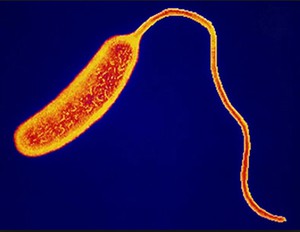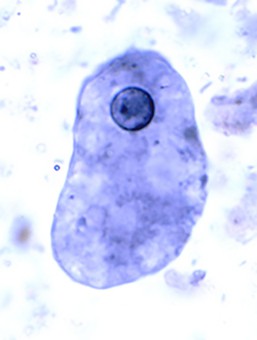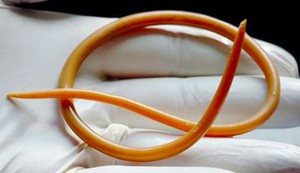Low-income countries’ urban and peri-urban areas are characterised by poor sanitation conditions, indiscriminate dumping of wastes and open urination and defecation. (Peri-urban areas are the areas surrounding a town between the urban and rural areas. They are often settled in by migrants from the countryside who suffer from extreme poverty, overcrowding and a lack of sanitation facilities.) Urban and peri-urban pollution and overcrowding create significant vulnerabilities for the overall urban population, particularly the poor. Diarrhoeal disease is one of the leading causes of morbidity (illness) and mortality (death) in developing countries, especially among children younger than five years of age.
Many human infections are spread through contact with human excreta. Bacteria, viruses, protozoa and parasitic worms cause many diseases that are spread by direct contact with faeces or indirectly via contaminated food and soil. These different types of pathogens or infectious agents are described in Box 2.1. Diseases may also be transmitted through a carrier organism or vector. Vectors are organisms that do not cause diseases themselves but carry or transmit disease-causing agents. For example, mosquitoes carry the protozoa that cause malaria and infect people with the disease through mosquito bites. Other examples of disease vectors are lice, ticks, fleas and rats.

Figure 2.1 Vibrio cholerae: the bacteria responsible for cholera (0.5–0.8 µm wide and 1.4–2.6 µm long).

Figure 2.2 Entamoeba histolytica: the protozoa that causes amoebic dysentery (up to 60 µm in size).

Figure 2.3 Ascaris lumbricoides or roundworm: these intestinal parasites can be very large – up to 35 cm long.

Figure 2.4 Trichuris trichiura or whipworm: these can reach 4 cm in length.
Table 2.1 lists some of the diseases that are caused by the many different types of pathogens and are linked to poor sanitation and waste management.
| Disease-causing agent | Disease | Description |
| Bacteria | Shigellosis | Causes abdominal pains and diarrhoea (see below). |
| Typhoid | Mild to severe fever lasting from a few days to several weeks. | |
| Cholera | An infection of the intestines that can cause watery diarrhoea leading to dehydration. | |
|
Diarrhoeal diseases (note these can also be caused by viruses) |
Production of frequent watery faeces that can lead to dehydration. Can be fatal, particularly among young children. Diarrhoea is a symptom of several other diseases in this table. |
|
| Viruses | Hepatitis A | An infection of the liver that can cause pain, diarrhoea and jaundice. |
| Polio | Can cause temporary or permanent muscle weakness, and sometimes death. | |
| Protozoa | Amoebiasis (also known as amoebic dysentery) | Infection that can occur up to several years after exposure to the protozoa. Can cause mild to severe diarrhoea and liver damage. |
| Giardiasis | Infection of the small intestine. It is usually symptomless but can have a variety of intestinal symptoms, such as chronic diarrhoea, abdominal cramps, gas production and frequent loose, pale and greasy stools. | |
| Parasitic worms | Ascariasis (roundworm) | One in four of the world’s population has this infection, which can lead to weight loss, malnutrition and anaemia. |
| Hookworm infection | Two species of nematodes that inhabit the small intestine, from where they suck blood, leading to anaemia. | |
| Tapeworm infection | A worm that normally lives in the intestines which can cause anaemia and malnutrition. This is usually spread through eating improperly cooked food that contains the worm or its eggs. | |
| Bilharzia or schistosomiasis | A disease caused by the Schistosoma worm that can cause diarrhoea and blood in the urine and faeces. In the long term, it can lead to liver and kidney damage. |